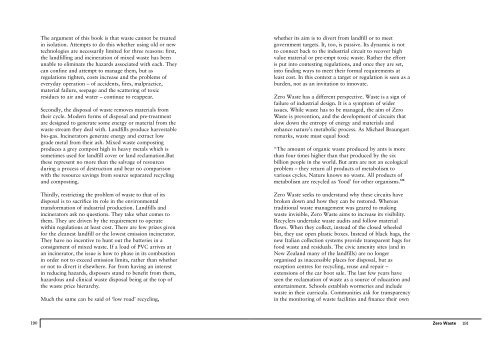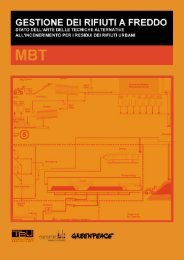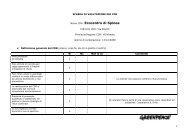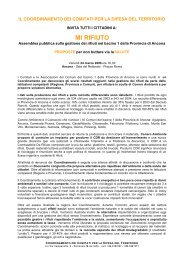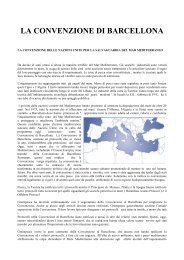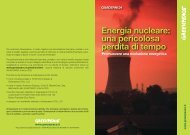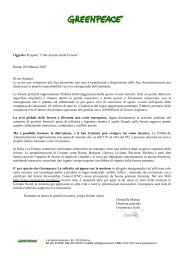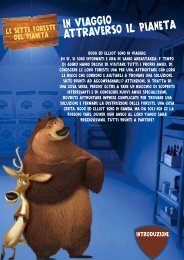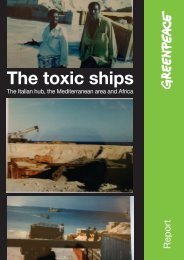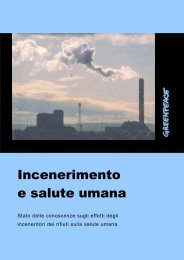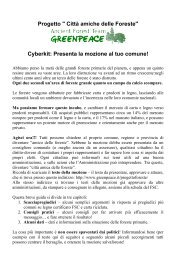Zero Waste by Robin Murray, Greenpeace Environmental Trust 2002
Zero Waste by Robin Murray, Greenpeace Environmental Trust 2002
Zero Waste by Robin Murray, Greenpeace Environmental Trust 2002
You also want an ePaper? Increase the reach of your titles
YUMPU automatically turns print PDFs into web optimized ePapers that Google loves.
The argument of this book is that waste cannot be treated<br />
in isolation. Attempts to do this whether using old or new<br />
technologies are necessarily limited for three reasons: first,<br />
the landfilling and incineration of mixed waste has been<br />
unable to eliminate the hazards associated with each. They<br />
can confine and attempt to manage them, but as<br />
regulations tighten, costs increase and the problems of<br />
everyday operation – of accidents, fires, malpractice,<br />
material failure, seepage and the scattering of toxic<br />
residues to air and water – continue to reappear.<br />
Secondly, the disposal of waste removes materials from<br />
their cycle. Modern forms of disposal and pre-treatment<br />
are designed to generate some energy or material from the<br />
waste stream they deal with. Landfills produce harvestable<br />
bio-gas. Incinerators generate energy and extract low<br />
grade metal from their ash. Mixed waste composting<br />
produces a grey compost high in heavy metals which is<br />
sometimes used for landfill cover or land reclamation.But<br />
these represent no more than the salvage of resources<br />
during a process of destruction and bear no comparison<br />
with the resource savings from source separated recycling<br />
and composting.<br />
Thirdly, restricting the problem of waste to that of its<br />
disposal is to sacrifice its role in the environmental<br />
transformation of industrial production. Landfills and<br />
incinerators ask no questions. They take what comes to<br />
them. They are driven <strong>by</strong> the requirement to operate<br />
within regulations at least cost. There are few prizes given<br />
for the cleanest landfill or the lowest emission incinerator.<br />
They have no incentive to hunt out the batteries in a<br />
consignment of mixed waste. If a load of PVC arrives at<br />
an incinerator, the issue is how to phase in its combustion<br />
in order not to exceed emission limits, rather than whether<br />
or not to divert it elsewhere. Far from having an interest<br />
in reducing hazards, disposers stand to benefit from them,<br />
hazardous and clinical waste disposal being at the top of<br />
the waste price hierarchy.<br />
Much the same can be said of ‘low road’ recycling,<br />
whether its aim is to divert from landfill or to meet<br />
government targets. It, too, is passive. Its dynamic is not<br />
to connect back to the industrial circuit to recover high<br />
value material or pre-empt toxic waste. Rather the effort<br />
is put into contesting regulations, and once they are set,<br />
into finding ways to meet their formal requirements at<br />
least cost. In this context a target or regulation is seen as a<br />
burden, not as an invitation to innovate.<br />
<strong>Zero</strong> <strong>Waste</strong> has a different perspective. <strong>Waste</strong> is a sign of<br />
failure of industrial design. It is a symptom of wider<br />
issues. While waste has to be managed, the aim of <strong>Zero</strong><br />
<strong>Waste</strong> is prevention, and the development of circuits that<br />
slow down the entropy of energy and materials and<br />
enhance nature’s metabolic process. As Michael Braungart<br />
remarks, waste must equal food:<br />
“The amount of organic waste produced <strong>by</strong> ants is more<br />
than four times higher than that produced <strong>by</strong> the six<br />
billion people in the world. But ants are not an ecological<br />
problem – they return all products of metabolism to<br />
various cycles. Nature knows no waste. All products of<br />
metabolism are recycled as ‘food’ for other organisms. 124<br />
<strong>Zero</strong> <strong>Waste</strong> seeks to understand why these circuits have<br />
broken down and how they can be restored. Whereas<br />
traditional waste management was geared to making<br />
waste invisible, <strong>Zero</strong> <strong>Waste</strong> aims to increase its visibility.<br />
Recyclers undertake waste audits and follow material<br />
flows. When they collect, instead of the closed wheeled<br />
bin, they use open plastic boxes. Instead of black bags, the<br />
new Italian collection systems provide transparent bags for<br />
food waste and residuals. The civic amenity sites (and in<br />
New Zealand many of the landfills) are no longer<br />
organised as inaccessible places for disposal, but as<br />
reception centres for recycling, reuse and repair –<br />
extensions of the car boot sale. The last few years have<br />
seen the reclamation of waste as a source of education and<br />
entertainment. Schools establish wormeries and include<br />
waste in their curricula. Communities ask for transparency<br />
in the monitoring of waste facilities and finance their own<br />
190<br />
<strong>Zero</strong> <strong>Waste</strong> 191


